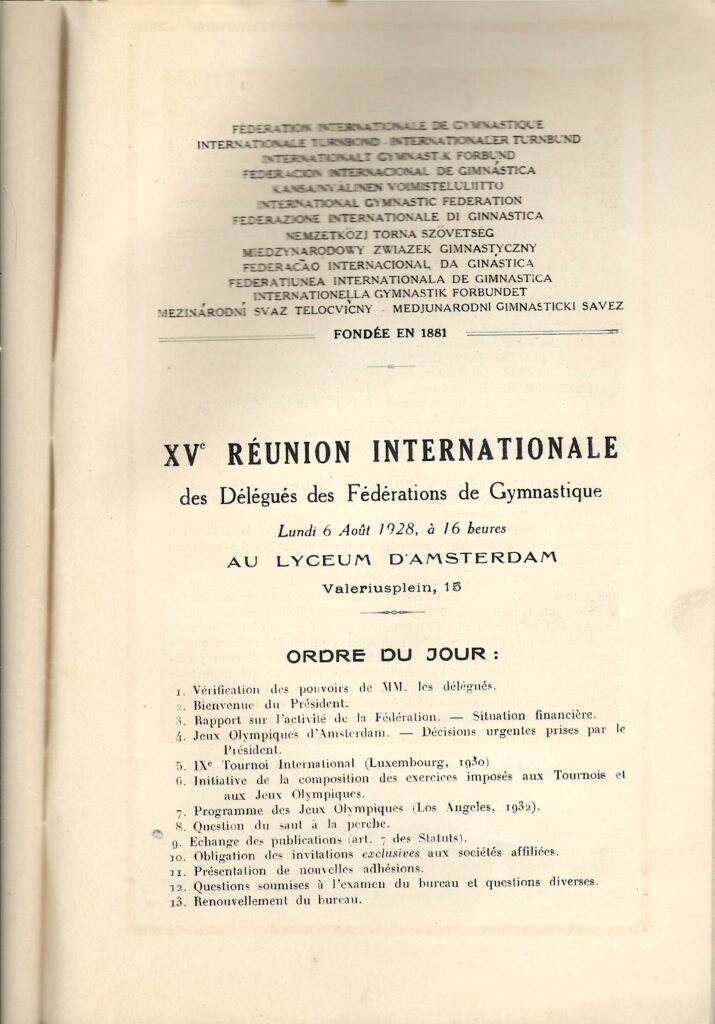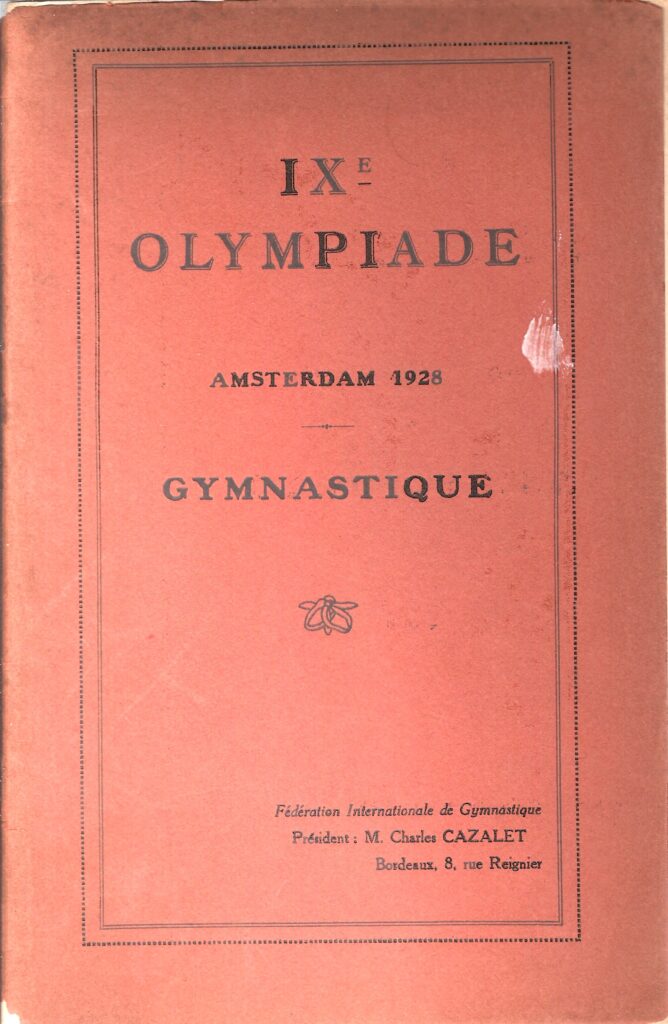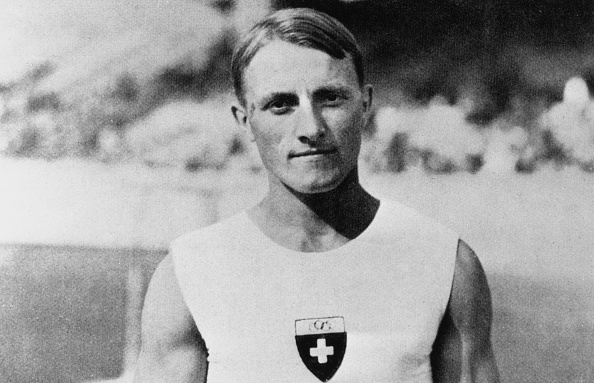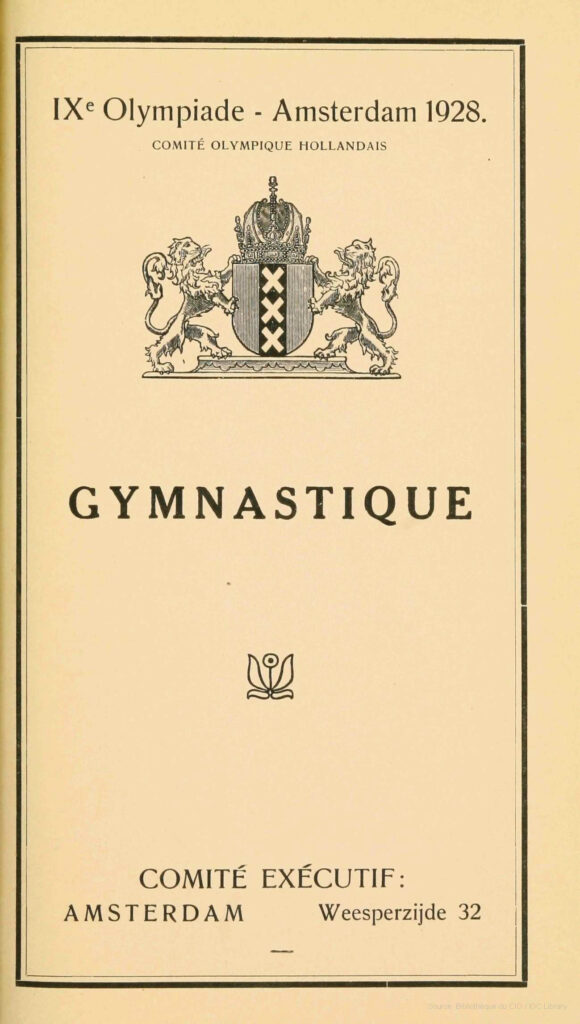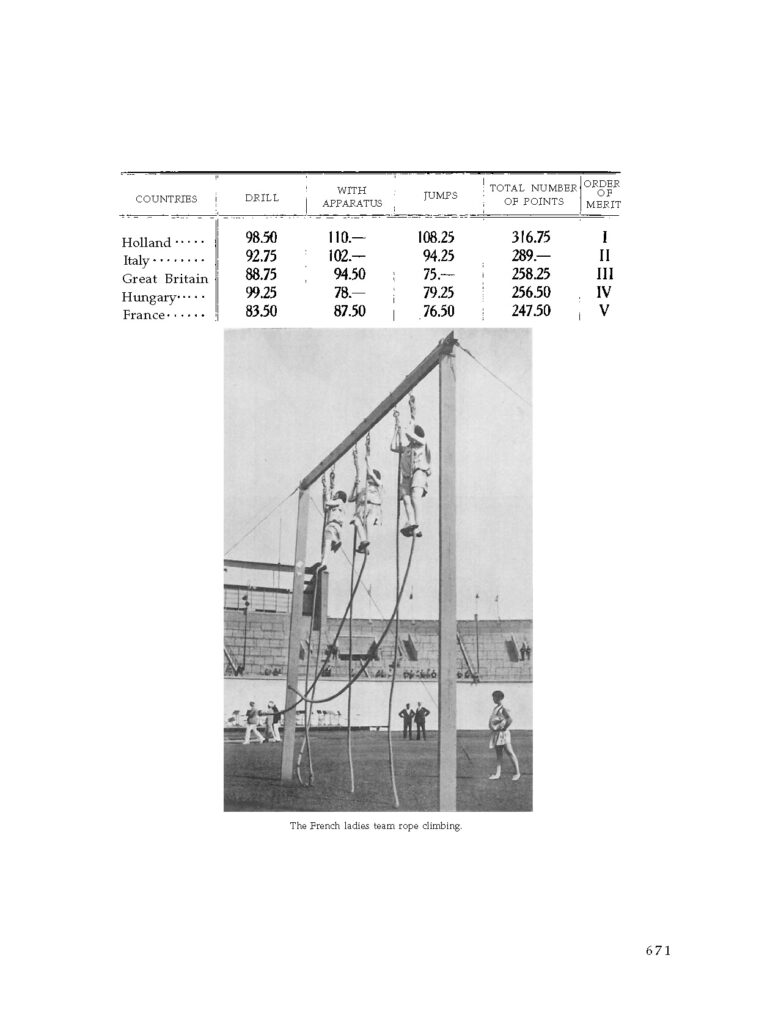In 1928, the 15th FIG Congress took place on August 6 in Amsterdam. It was the first meeting of the delegates after the death of Nicolas J. Cupérus, the man who led the FIG for 43 years.
The minutes are fascinating because they show the struggle between the International Olympic Committee (IOC) and the International Gymnastics Federation (FIG) to define the sport of gymnastics.
Is pole vault a gymnastics event or an athletics event?
In the view of the FIG, it was a gymnastics event, especially since it required the use of apparatus. (It was also part of Jahn’s seminal text, Die Deutsche Turnkunst, though that point did not come up in conversations.) But the IOC didn’t share the FIG’s view.
*Cue dramatic music.*
Reminder: Track and field events like pole vault were part of the World Championships (originally called the International Tournament) until 1950. Here’s a full list of events during the major men’s gymnastics competitions from 1896 until 1950.
